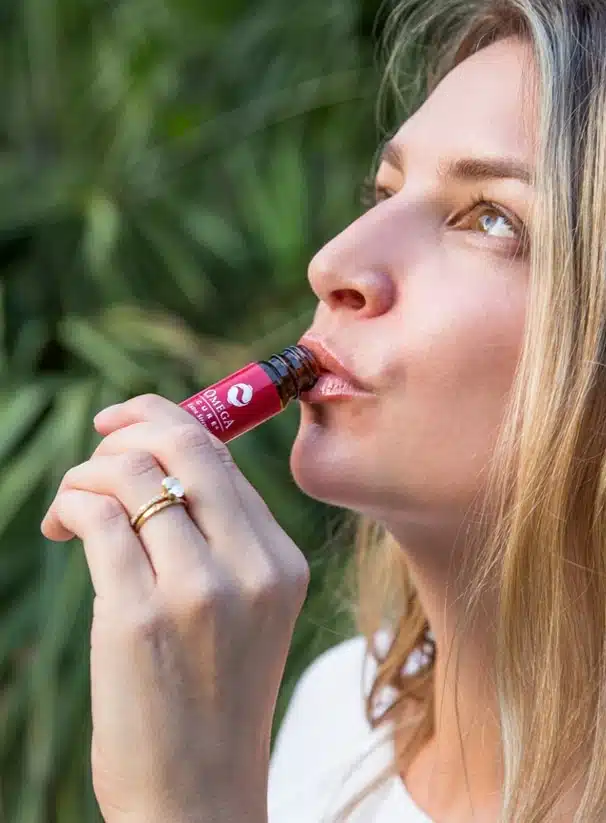Pharmacy Aisle Confusion: Three Misleading Claims on Fish Oil Labels
Choosing a fish oil supplement can be daunting. The shelves in the supplement aisle are lined with a plethora of brands, all claiming to be the best. How can you tell a quality fish oil from a less effective omega-3?
Here are three common label claims to be aware of:
Omega-3, 6 and 9
Omega-3 manufacturers with labels claiming to contain omega-3, 6 and 9 are taking a ‘more is better’ approach. They’re hoping you’ll be so impressed with the number of ‘omegas’ in their supplement that you won’t stop to think that O-6 (most vegetable oils) and O-9 (abundant in olive oil) are simply a whole lot cheaper to produce than omega-3, which is found predominantly in fatty fish and breast milk. More disturbingly, they are presuming you don’t know enough about essential fatty acids to realize that the reason people are in such dire need of omega-3 right now is to compensate for the glut of omega-6s in the Western diet. Our ancestors probably ate nearly equal amounts of omega-3 and omega-6 fats; however, most Westerners today consume 15 to 30 times more of the pro-inflammatory omega-6s from vegetable oils and processed foods. Keeping that in mind, you don’t need a supplement that contains more omega-6.
Flax Versus Fish
Omega-3 is not just one molecule, but also a family of many different molecules, each with different functions within the body. There are many different kinds of omega-3, but the most notable names on the market right now are the ALA, EPA, and DHA.
Many omega-3 manufacturers produce flaxseed oils, which are rich in the ALA omega-3. This plant-sourced omega-3 (also found in walnuts, chia, echium, etc.) has to be converted into the powerful EPA/DHA molecules in order to be useful to the body. In this conversion process, only about 5-10 percent of the ALA gets converted into effective omega-3. Since so little ALA is converted into the EPA and DHA, consuming a plant-based omega-3 is extremely inefficient compared to consuming a marine-based omega-3.
Over 90 percent of the studies showing positive results with regard to heart, eye, brain and joint benefits have been done using omega-3s from a marine source. Even the American Heart Associations now clearly recommends you need to get your omega-3s from fish, or fish oil, not a plant source.
Where Does Your Fish Oil Come From?
There are two common claims made about the source of the fish oil: what kind of fish the oil came from and where in the world the fish itself came from.
Let’s deal with the first part of the source claim – salmon versus cod liver. Studies comparing the differences between fish oil sourced from salmon and cod liver oil have found that the profiles of the two are very similar. Salmon oil usually contains all the leftovers of the fish – the eyes, the brain, and other unsavory bits – and requires a little more processing. There is also a slight difference in the ratio of EPA to DHA. But on the whole, the research studies do not show a huge health difference depending on whether people consume salmon oil or cod liver oil.
Perhaps a better question for the consumer to ask is: “Where does your fish oil come from?”
On the surface level, the question doesn’t seem to be so relevant. The amount of omega-3 in the fish may vary depending on the time of the year of the catch and what the fish were eating. But essentially, the fish from different parts of the world’s oceans are not so different from one another.

However, how the fish and fish oil were treated from catch to processing to final bottling is critical to the quality of the product. And the treatment of the oil often depends on where in the world the fish was originally caught.
If the fish oil has a long journey through warm temperatures and is exposed to oxygen and light, the freshness of the product will be compromised, as well as the health benefits. Much of the fish oil of the world is actually caught off the coast of South America and Africa, not Norway (although many companies would you like you to believe that their fish oil is Norwegian, and therefore decorate their packaging with picturesque Norwegian fjords and flags). In a recent study from Norway, none of the fish oils that originally came from South America and Africa had acceptable oxidation levels for human consumption. In other words, they were all rancid.
The problem of rancidity among fish oil is a large problem and almost wholly unaddressed. Read more about the issues with consuming rancid fish oil here.
Recent Posts
-
Dose, Joint Health, Omega-3
Omega-3 & Pain Relief: Finding the Best Strategy
Are you one among the 1 in 5 Americans grappling with chronic pain, as reported by the CDC [1]? If the thought of traditional pain medications and their potential side...3 months ago -
Eye Health, Omega-3
The Startling Link Between Skin Care and Eye Health
Dry eye complaints are on the rise worldwide. Many risk factors – including aging and increased computer use – help explain the increase. But there's another driver few people know...5 months ago -
Heart Health
Does Taking Fish Oil Lower Cholesterol?
Many people believe that incorporating omega-3s into their diet will solve their cholesterol woes. But the truth is much more nuanced; it's not as simple as taking a daily fish...1 year ago -
Immune Health, Sleep
Melatonin & COVID-19: Can This ‘Sleep Hormone’ Help?
It started with a runny nose and a slight cough. But when his 72-year-old wife tested positive for COVID-19, he got concerned. “Is there any research suggesting the supplements we...2 years ago -
Full-Spectrum Fish Oil, Omega-3
Is It Good to Store Fish Oil in the Freezer?
Fish oil is a great source of the omega-3 fatty acids we all need for good health. It’s also highly perishable. Consuming rancid fish oil can have negative health implications....2 years ago -
Omega-3
Our Favorite Omega-3 Fish Oil Benefits
Omega-3 fish oil certainly has a reputation for delivering a plethora of incredible benefits. And it’s true! Omega-3 fatty acids have been studied for a broad range of health conditions....2 years ago








